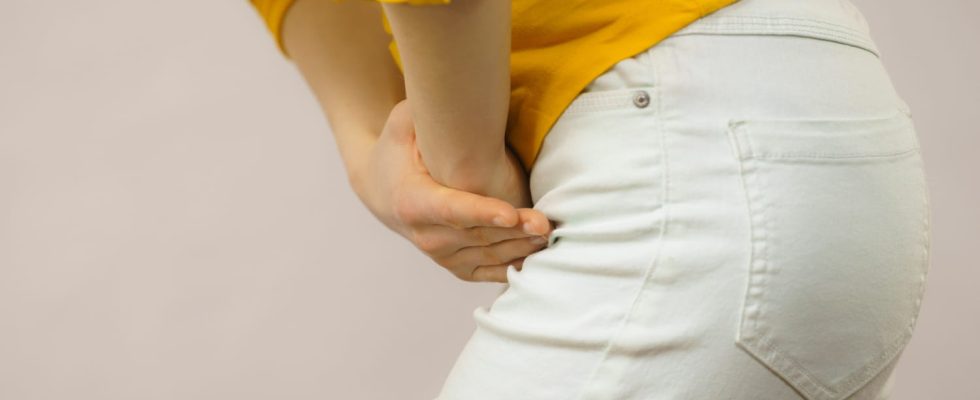Whether it affects men or women, stress incontinence causes involuntary urinary leakage, which has a real impact on daily life. If the causes are different for men and women, this incontinence is usually treated by rehabilitation of the perineum.
Definition: what is stress incontinence?
Generally, “we call stress incontinence urinary leakage without concomitant need. Most of these leaks concern the women aged 40 to 60” indicates Professor Xavier Deffieux, gynecologist-Obstetrician, Pelvi-perineology, gynecological surgeon. Coughing, laughing, brisk walking, lifting a bag, jogging or any activity exerting a increased pressure on the abdomen can trigger these leaks involuntary. It is often either violent exertion (sport), or moderate effort. “We can also see this stress incontinence appear in young sportswomen and athletes very high level“, says the specialist.
Stress incontinence presents a real impact on daily life. “It is manifested by urinary leakage which will prevent the practice of certain activities and cause daily discomfort because they require to wear urinary protection.“In addition, leaks can cause odors and interfere with sexuality. We must insist on the quality of the protections to avoid irritation and obtain maximum comfort, “there is a real science of urinary protection that is not well known, so night diapers are different from day diapers for example, not all protections offer the same degree of absorption“insists the Professor.
What causes stress incontinence in women?
The causes are multifactorial: “It could be the basic fabric quality at birth, pregnancy-related changes, of age, obesity or functional abnormalities muscle coordination…“. For example, during pregnancy, 40% of women experience urinary leakage on exertion in the third trimester, adds the gynecologist-obstetrician.
What are the causes of stress incontinence in men?
In men, the causes are different: This incontinence occurs after prostate surgery. “Patients then suffer from insufficiency or deficiency of the sphincter muscle after great effortsThis type of incontinence is common in the three months following prostate surgery.
Stress incontinence is still a taboo subject, even though information campaigns are increasingly carried out on this subject and general practitioners raise awareness of this disorder and encourage patients to talk about it. The diagnosis is based on an interrogation through questionnaires standardized with about ten questions to identify the discomfort and eliminate other pathologies through additional examinations, such as urinary leakage. “We’re going to make them cough too and see what the cough generates“. The basic treatments, explains the specialist, concern there rehabilitation of the perineum to learn how to re-contract it, either with a physiotherapist or with a midwife specialized in this type of rehabilitation. “In general, it takes a first burst of about ten sessions. If the leaks improve, we can then re-prescribe from 10 to 20 sessions.” Besides, it is interesting to note that during their pregnancy, women can also perform perineal rehabilitation with exercises of contraction muscles. In any case, we do not ask people to stop the sport. “There are also devices called pessaries to be placed inside the vagina, which prevent urinary leakage on exertion. And for those who do not wish to meet professionals, they have the possibility of self-rehabilitate by different tools, by downloading applications on mobile to re-educate the perineum thanks to advice or exercise sheets or by buying vaginal probe devices using electrostimulation and biofeedback.
In the case of obesity, the solution is to losing weight, the support is therefore more global. “As a last resort, if other treatments are ineffective, surgery may be necessary by performing injections around the urethra. We have a surgical panoply adapted to each patient“, concludes the specialist.
Thanks to Professor Xavier Deffieux, General Secretary SIFUD-PP, gynecologist-Obstetrician, Pelvi-perineology, gynecological surgeon at Paris-Saclay University, Antoine Béclère de Clamart Hospital (APHP).
